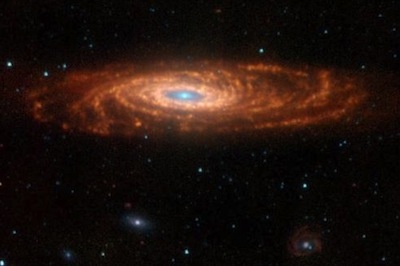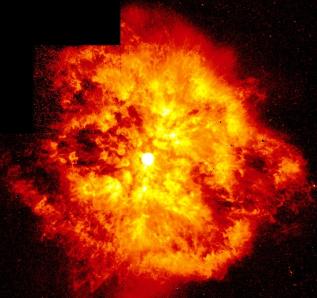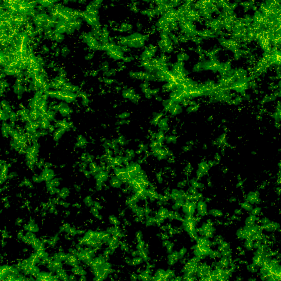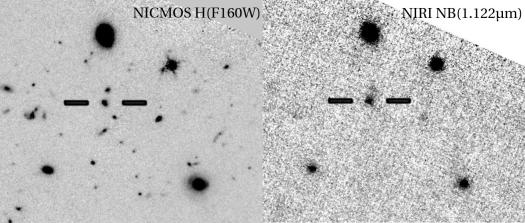Research
My research focus is on star formation, active nuclei and dust and gas in galaxies both near and far, as well as massive stars in the Galaxy, nearby galaxies, and at the earliest epochs of star formation. My work is concentrated on spectroscopy in the near, mid and far-infrared wavelengths, and the novel astronomical instruments and processing algorithms which are enabling the recent advances in these areas. A major element of my research is the study of PAHs -- polycyclic aromatic hydrocarbons -- small organic molecules ubiquitous in galaxies of most types. Roughly 10% of all the light emitted by galaxies is channeled through these fascinating planar molecules. When combined with other more traditional tracers of the processes governing galaxy evolution, this emission offers, w, tremendous untapped potential for studying the complex interplay between gas and dust heating and cooling, the formation of stars, and feedback from central supermassive black holes.Publications
A listing of my past and recent publications can be found in my library at ADS.Star Formation, Dust, and Gas in the Nearby Universe

My main research focus over the last decade has been on infrared studies of galaxies in the "local" universe (within several hundred million light years), with an emphasis on resolved infrared and sub-mm spectroscopy. The infrared-submm emission of galaxies is among the richest of any wavelength regime, probing a wide range of environments, from the coolest gas in dense clouds of material destined to form stars, to the highly excited regions near powerful accreting massive black holes found in the centers of galaxies. The mid- and far-infrared space observatories Spitzer and Herschel have been and continue to be fundamentally important in the study of galaxy evolution. They provide access to rich diagnostics of physical conditions not available through any other observational window. Our dedicated projects including SINGS, KINGFISH, and Beyond the Peak are for the first time permitting us to study on similar scales (sub-kiloparsec) almost all phases of gas and dust existing with galaxies.
An example SINGS galaxy is NGC 7331, seen at right in 3.6-8 μm Spitzer imaging, which reveals a massive star-forming ring which contains the majority of the forming stars.
Massive Stars
 Massive stars dominate the physical and observational properties of star
formation. The power output per baryon of the heaviest stars is up to
20,000x higher than their solar mass analogs, and they profoundly
influence their environments, injecting kinetic energy, metals and dust
into the ISM via strong stellar winds and supernovae, and, in extreme
cases, driving bulk galactic outflows which can escape the host galaxy.
Massive stars dominate the physical and observational properties of star
formation. The power output per baryon of the heaviest stars is up to
20,000x higher than their solar mass analogs, and they profoundly
influence their environments, injecting kinetic energy, metals and dust
into the ISM via strong stellar winds and supernovae, and, in extreme
cases, driving bulk galactic outflows which can escape the host galaxy.
Of particular interest to me are Wolf-Rayet (WR) stars, massive stars shedding enormous amounts of material in a dense, fast stellar wind (up to 10 orders of magnitude bigger than the solar wind). WR stars represent the last 10% of the most massive stars' lifetimes, and are so luminous, they can be seen in the integrated spectra of massive star-forming galaxies. I am involved in several active projects relating to WR and other massive stars, including quantifying their extreme nuclear processing through the measurement of enhanced wind-borne neon and other abundances. Also see in particular my survey for new Galactic WR stars, 2WoRLDS.
First Light Objects
 Combined constraints from the microwave background, and high-redshift
quasars have fixed the epoch when the earliest objects formed to a
short interval less than 5% of the age of the universe, from around
200 million to 1 billion years after the big bang. The first stars
likely condensed in small proto-galaxies, connected by filaments of
infalling gas (visualization of the Springel et al. hydrodynamic
simulation at right). With very few metals present in the pristine
gas to cool it and allow it to coalesce, the first stars to form are
thought to have been very massive, perhaps up to 500 solar masses.
These extreme stars produced intense ultraviolet ionizing radiation,
and are believed to have re-ionized the universe by z~6. This same
ionizing starlight should have also produced copious amounts of the
fundamental far-ultraviolet transition of hydrogen, Lyman-alpha.
Combined constraints from the microwave background, and high-redshift
quasars have fixed the epoch when the earliest objects formed to a
short interval less than 5% of the age of the universe, from around
200 million to 1 billion years after the big bang. The first stars
likely condensed in small proto-galaxies, connected by filaments of
infalling gas (visualization of the Springel et al. hydrodynamic
simulation at right). With very few metals present in the pristine
gas to cool it and allow it to coalesce, the first stars to form are
thought to have been very massive, perhaps up to 500 solar masses.
These extreme stars produced intense ultraviolet ionizing radiation,
and are believed to have re-ionized the universe by z~6. This same
ionizing starlight should have also produced copious amounts of the
fundamental far-ultraviolet transition of hydrogen, Lyman-alpha.

Detecting these first light objects will require novel observational methods and, potentially, new facilities like JWST or one of the 20-30m ground-based telescopes currently being planned. We became interested in whether the Lyman-alpha emission from these earliest objects could be detected now, using 8m-class telescopes. We are attempting ultra-low background narrowband imaging in the J-band (1-1.3 μm), where Lyman-alpha redshifts to at z=7.5-10. By working in the narrow windows between the OH "airglow" lines, we can greatly expand the detection limits of existing instruments and telescopes. The image at left shows how a short narrow-band exposure can reveal strong line emission, here [OII] 3727Å at z=2. Other approaches, including a novel Fabry-Perot tunable survey of cluster-lensed first light objects, are also in development.
Instrumentation and Algorithms
 I have maintined involvement in a number of infrared instrument
projects. Some of the instrument projects I have worked on or am
currently involved with:
I have maintined involvement in a number of infrared instrument
projects. Some of the instrument projects I have worked on or am
currently involved with:
- BLISS, a US concept background-limited submm spectrometer for the Japanese SPICA telescope, with projected sensitivity up to two orders of magnitude above what Herschel provides.
- SCORE, a 10μm echelle spectrograph (the first of its kind), built as a prototype for the short-wavelength, high-resolution spectrograph module of Spitzer Infrared Spectrograph (IRS). Seen at right mounted on the Palomar Hale 200", where it was operated from 1996-2000.
- CorMASS, a compact near-infrared zJHK spectrograph which inherited some design elements from SCORE, built using spare 2MASS parts. Operated at the Palomar 60", the Vatican's VATT telescope on Mt. Graham, the Apache Point 3.5m, and soon the Magellan 6.5m. CorMASS serves as the follow-up spectrograph for my 2WoRLDS WR line detection survey.
- F2T2, a tunable infrared Fabry Perot for first light surveys, to be integrated with the new Gemini Flamingos 2 instrument being built at the University of Florida.
- BLISS, a far-infrared background-limited spectrograph proposed as a US contribution to the Japanese SPICA cold infrared space telescope.
The advent of large format optical and infrared detector arrays has had a substantial impact on spectrograph design and data analysis techniques. Taking full advantage of the available detector area has resulted in modern optical configurations which have revolutionized astronomical spectrography, but have also necessitated a new class of algorithms to efficiently extract the distorted spectra they produce. I am involved in several aspects of algorithm design, in particular algorithms related to the optimal extraction of noisy, distorted spectra, and spectral map reconstruction. An example of one of these algorithms at work is in Cubism, a tool developed for SINGS (and other) spectro-imaging with Spitzer's IRS spectrograph.
Last modified: Fri Nov 1 11:48:30 EDT 2013